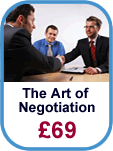Sunday, 17 June 2007
Influencing Sales via 'The Contrast Principle'
My partner and I had taken my son, Quinn, out for a trip to the zoo recently and as we entered we came across the usual ‘souvenir’ store complete with an array of animal related toys. Of course my son went crazy at this point and wanted everything. I explained that we could return after our walk around the zoo and that I would consider buying him something then. Although disappointed, he seemed to agree that this was fair and we managed to prise him away and into the zoo.
We had a fantastic time, looking at all the animals and stopping for a bite to eat. However, as we drew closer to the exit I began to remember my promise about the souvenir store. It seems Quinn had not forgotten either. “Dad?” He said, as he finished the remains of an ice cream “How much money can I have for toys?” I contemplated this for a second or two and said, “I think £5 should be enough”. “£5!” He said, “That’s nothing, how about £200?” “£200 is a lot of money for toys son, even for you. In fact, that would buy up the whole souvenir shop. How about £10?” His response was immediate “Ok dad”.
It was only when I reached the souvenir shop that I realised my mistake. I had been duped by my son and what is known as “The contrast Principle”. Of course, after my sons initial request of £200, the £10 counter offer didn’t seem so bad, yet he had managed to double his initial request.
The contrast principle is a powerful way to increase the odds of getting what you want. In fact, once you recognise it, you realise it is used in many different scenarios and is yet another example of our brain using a mental shortcut i.e. ‘The offer must be fair, it is much less than the other’.
Car salesmen demonstrate an example of the contrast principle used in a business context. They will sell us a car and only after you have accepted the purchase will they start trying to sell you the extras (Metallic paint, Sat Nav etc.)
This can also be seen in a clothing retailers, common sense would tell us that it would be easier to try and sell a customer a small item (like a belt) and then ‘once they are warmed up’, try to sell them a larger item. However, this actually works better in reverse. The idea is that once the customer has bought the expensive sweater, the cheaper belt and t-shirt don’t seem as much...in contrast.
This excerpt is included in the Trainer Bubble training course material 'The Power of Influence'. Download this fantastic training resource at Trainer Bubble
We had a fantastic time, looking at all the animals and stopping for a bite to eat. However, as we drew closer to the exit I began to remember my promise about the souvenir store. It seems Quinn had not forgotten either. “Dad?” He said, as he finished the remains of an ice cream “How much money can I have for toys?” I contemplated this for a second or two and said, “I think £5 should be enough”. “£5!” He said, “That’s nothing, how about £200?” “£200 is a lot of money for toys son, even for you. In fact, that would buy up the whole souvenir shop. How about £10?” His response was immediate “Ok dad”.
It was only when I reached the souvenir shop that I realised my mistake. I had been duped by my son and what is known as “The contrast Principle”. Of course, after my sons initial request of £200, the £10 counter offer didn’t seem so bad, yet he had managed to double his initial request.
The contrast principle is a powerful way to increase the odds of getting what you want. In fact, once you recognise it, you realise it is used in many different scenarios and is yet another example of our brain using a mental shortcut i.e. ‘The offer must be fair, it is much less than the other’.
Car salesmen demonstrate an example of the contrast principle used in a business context. They will sell us a car and only after you have accepted the purchase will they start trying to sell you the extras (Metallic paint, Sat Nav etc.)
This can also be seen in a clothing retailers, common sense would tell us that it would be easier to try and sell a customer a small item (like a belt) and then ‘once they are warmed up’, try to sell them a larger item. However, this actually works better in reverse. The idea is that once the customer has bought the expensive sweater, the cheaper belt and t-shirt don’t seem as much...in contrast.
This excerpt is included in the Trainer Bubble training course material 'The Power of Influence'. Download this fantastic training resource at Trainer Bubble
Labels:
contrast,
course,
influence,
influencing,
persuasion,
principle,
resources,
sales,
technique,
training
Subscribe to:
Post Comments (Atom)




























No comments:
Post a Comment